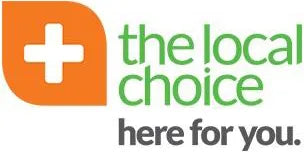
Low blood sugar can be defined as follows:
It is the condition in which the sugar levels in the blood become too low, usually about 2.5 mmol/L or less. This condition can normally be spotted by certain symptoms that go away after one has eaten. The blood sugar level at which these symptoms are experienced differs from person to person.
What causes low blood sugar levels (hypoglycemia)?
When functioning normally, the pancreas excretes the correct amount of insulin needed to keep the blood sugar levels balanced. However, in low blood sugar, the pancreas releases too much insulin, causing blood sugar levels to drop. This, along with certain diseases, can cause hypoglycemic episodes.
What should my blood sugar levels be?

What causes hypoglycemic episodes in non-diabetic people?
Reactive hypoglycemia:
This is the most common reason for low blood sugar in non-diabetics. It occurs when the pancreas releases too much insulin after a sudden spike in glucose, such as after a carb-heavy meal. The insulin stays in the bloodstream longer than it should, lowering blood sugar too much.
Reactive hypoglycemia often affects people who are overweight or have type 2 diabetes. It’s believed that this condition can increase the risk of developing type 2 diabetes.
Other causes of Low Blood Sugar:
- A tumour in the pancreas
- An overdose of diabetic medication such as insulin or tablets
Other diseases:
- Addison’s disease (adrenal glands)
- Weak pituitary gland
- Liver damage
- Post-gastrectomy (stomach removal)
- Cancer
- Malnutrition or fasting
- Excessive alcohol consumption
Symptoms of Low Blood Sugar (Hypoglycemia)
What happens during a hypoglycemic episode?
Common symptoms include:
- Pale face
- Shaking hands
- Excessive sweating
- Weakness or low energy
- Fast heartbeat
- Constant hunger
- Unexplained agitation
- Difficulty concentrating
- Easy irritability
- Fatigue
- Blurred vision
- Fainting
- Convulsions
- Coma (in severe cases)
These symptoms often occur 3 to 4 hours after eating.
Care and Prevention of Low Blood Sugar (Hypoglycemia)
If you experience these symptoms a few hours after meals, consult your doctor.
Seek further evaluation if all of these apply:
- Blood glucose level is below 2.5 mmol/L
- You experience several of the symptoms above
- Symptoms resolve within 10 minutes of eating sugar
How is the diagnosis made?
Hypoglycemia is diagnosed by testing blood glucose. Levels below 2.5 mmol/L confirm the condition.
- In case of suspected pancreatic tumour, glucose and insulin levels are monitored for several days in hospital.
- If insulin is abnormally high, a tumour may be present and surgically removed.
Exercise and Diet
Exercise usually doesn’t cause hypoglycemia in healthy individuals. If symptoms occur during workouts, eat complex carbs (like starches or pasta) beforehand. During exercise, use simple carbs (like energy drinks or bars) to maintain levels.
Reactive hypoglycemia can be managed by adjusting your diet. Eat more complex carbs like potatoes, rice, or pasta. Have smaller, more frequent meals — breakfast, lunch, dinner, and three snacks. This helps prevent insulin spikes.
Treatment of Hypoglycemia
- Follow dietary adjustments described above.
- Monitor blood sugar regularly. If low but symptom-free, maintain your routine.
Strategies to Control Blood Sugar:
Diet:
Eat regular meals. Refer to our FREE Manna Low GI Menu Plan.
Supplements:
A natural supplement like Manna Blood Sugar Support may help regulate blood sugar levels.









